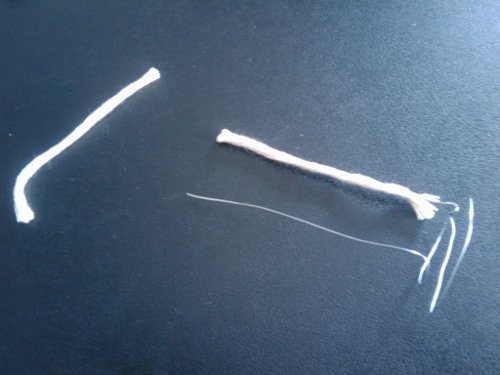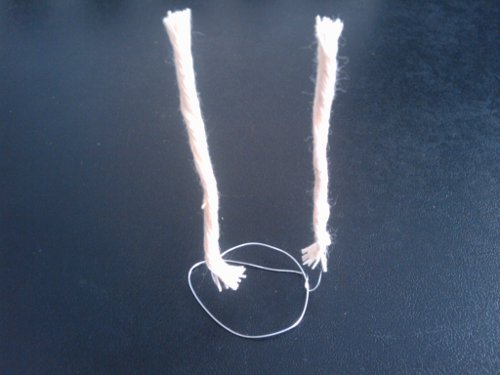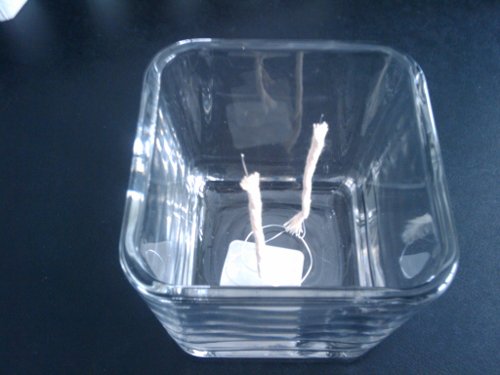How to make a survival vegetable oil lamp
The Do It Yourself Vegetable Oil Lamp
How to make a survival vegetable oil lamp.

The author suffered a total power outage for three days and nights. This left the house with no electricicy, water, heat or light. As they say, necessity is the father of invention. We want to share this information with you here.
You will need a glass container, preferrably made for holding candles. This one was from a dollar store in the candle section. Also needed is some twine, fine wire and vegetable oil.

The first step is to take a piece of wire and make a coil about an inch or so round at one end. Straighten the other end to stand straight up.
Shown in the photo is a dual wick version of the oil lamp. This was meant to put out more light and heat. You can choose to make either one, two or more wicks. Be aware though that more than two wicks may cause too much heat for the glass container.
Now, get out your twine or other suitable wick material and a pair of scissors. Cut the twine to the height of your container. The one in the example was three inches high. Next, feed the twine onto the wire frame you made in the previous step. This will allow the wick to stand upright at all times. See photos below.



Get your glass container and vegetable oil out. Place the wick in the middle of the container and fill it with standard vegetable oil. The oil used here cost about $5 per gallon, on sale.




Final Notes:
The oil will burn very slowly while providing a fair amount of light and heat. The twine used did not burn cleanly, so after about 24 hours, the lamp had to be topped off again in order to prevent smoking. Keeping the oil topped off though, provides a very clean source of heat and light with no noticable scent. Experimenting with various materials for a wick may provide better results. The best idea would be to have a wick that burns down with the oil level to prevent smoke and soot. The type of oil used here does not wick easily, so an open top oil lamp had to be used.
Two of these lamps provides a nice amount of light in a survival situation. A bit of heat is also given off. The sides of the lamp get very warm to the touch.
Cotton shoe laces or other organic materials may be tried in an emergency.
Feel free to ask any questions or get help with your project on our
Disclaimer: The ideas presented here are for informational purposes only. Experiment at your own risk. We assume no responsibility whatsoever.
About the Author
| Troy Reid |




